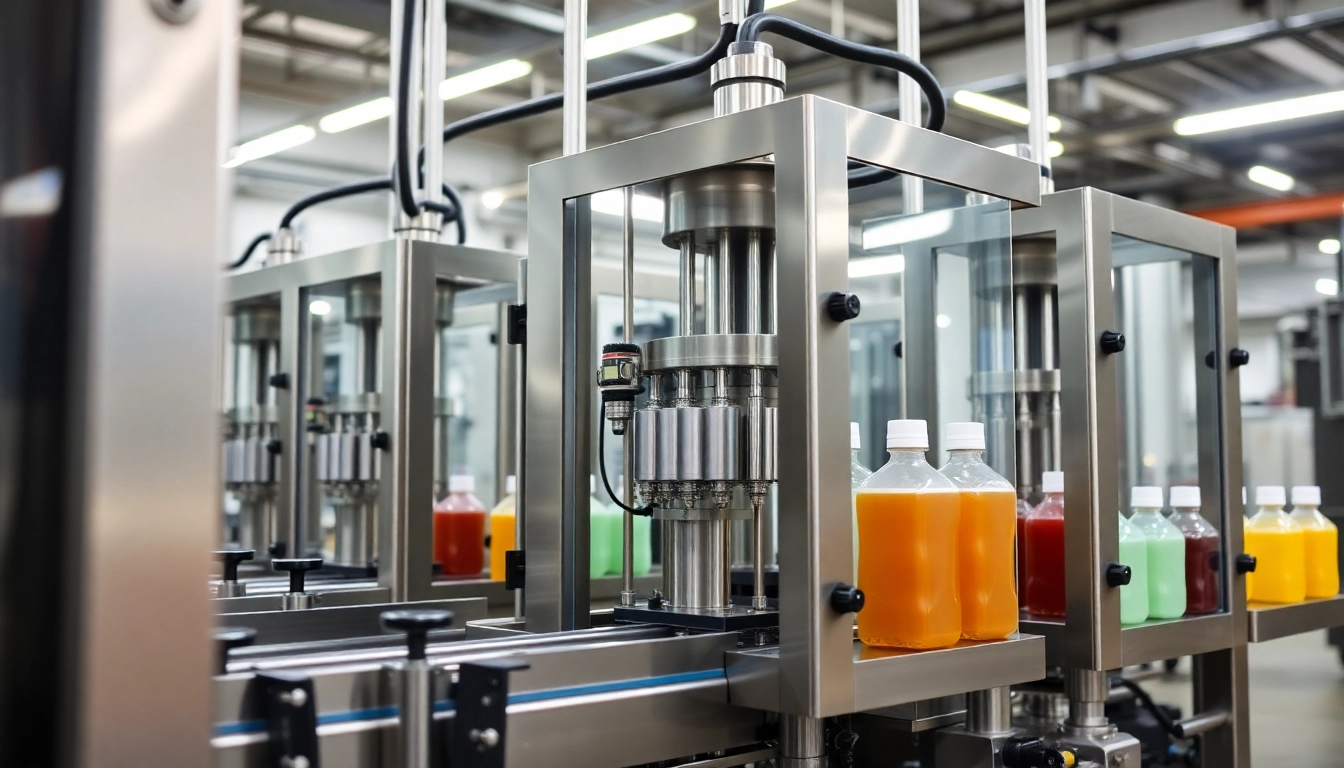
Introduction to Liquid Packaging Machines
In today’s fast-paced manufacturing landscape, liquid packaging machines play a pivotal role in ensuring efficiency, consistency, and quality in the packaging process. As industries evolve, the demand for sophisticated machinery capable of handling various liquid forms—ranging from the most viscous sauces to delicate pharmaceutical liquids—has grown significantly. This article delves into the intricacies of liquid packaging, providing crucial insights for businesses looking to partner with a liquid packaging machine supplier.
What is a Liquid Packaging Machine?
A liquid packaging machine is specifically designed to handle, fill, seal, and package liquid products into containers. These machines are critical in numerous sectors including food and beverage, pharmaceuticals, chemicals, and cosmetics. They ensure that products are packaged in a manner that preserves quality, extends shelf life, and meets safety regulations.
Applications in Various Industries
Liquid packaging machines are versatile and find applications across multiple industries:
- Food and Beverage: Used for packaging sauces, juices, dairy products, and ready-to-drink beverages.
- Pharmaceutical: Ideal for packaging syrups, tinctures, and other liquid medications.
- Chemicals: Suitable for solvents, adhesives, and specialty chemicals that require secure and precise packaging.
- Cosmetics: Often employed for lotions, serums, and other liquid beauty products.
Benefits of Using Automatic Liquid Packaging Solutions
Investing in automatic liquid packaging solutions provides several advantages:
- Improved Efficiency: Automation speeds up the packaging process, allowing for higher throughput.
- Consistency: Automated machines offer uniform filling, minimizing variations between packages.
- Reduced Labor Costs: Automation can lead to significant savings in labor costs while reallocating human resources to more critical tasks.
- Enhanced Quality Control: Many machines are equipped with monitoring systems to ensure that all products meet quality standards.
Understanding Different Types of Liquid Packaging Machines
Choosing the right type of liquid packaging machine is crucial and depends on the specific needs of the product being packaged. Below are the most common types found in the industry:
Piston Filling Machines
Piston filling machines use a piston mechanism to accurately fill containers with liquid products, making them suitable for thicker liquids and pastes. They are ideal for precise measurements and are frequently used in industries like cosmetics and food where product consistency is key.
Gravity Filling Machines
Gravity filling machines operate on a principle of gravity, pouring liquid from a height into containers. They are best suited for thin liquids such as water, juices, and sauces, where high speed and efficiency are required.
Vacuum Filling Machines
Vacuum filling machines function by creating a vacuum in the container before filling it with liquid. This method is particularly useful for liquids that produce foam during the filling process or those that may be sensitive to air exposure.
Choosing the Right Liquid Packaging Machine Supplier
Selecting a reliable liquid packaging machine supplier is essential for ensuring the success of your packaging operations. Here are some key factors to consider:
Key Factors to Consider
When evaluating suppliers, consider the following:
- Experience: Opt for suppliers with proven experience in the industry.
- Customization Options: Ensure they can provide machines tailored to your specific needs.
- Compliance: Confirm that they comply with industry standards and regulations.
Evaluating Quality and Efficiency
Quality assurance is paramount when selecting a supplier. Look for:
- A detailed inspection process for machinery.
- Customer testimonials and case studies showcasing successful implementations.
- Warranty offerings and post-sale support.
Importance of Customer Support
Effective customer service can make or break your relationship with a supplier. Look for:
- Availability of technical support and training for your staff.
- Prompt responsiveness to service inquiries.
Case Studies: Successful Implementation of Liquid Packaging Solutions
To better illustrate the effectiveness of liquid packaging solutions, let us explore a few case studies across different industries:
Food and Beverage Industry
A leading beverage company implemented a state-of-the-art gravity filling machine, which increased their production capacity by 30%. This system allows for precise filling of their popular juice products and has significantly reduced spillage during the packaging process.
Pharmaceutical Applications
A pharmaceutical firm adopted piston filling machines for better accuracy in dosing liquid medications. The upgrade led to a 25% decrease in material waste and enhanced compliance with stringent health regulations.
Chemical Packaging Innovations
An industrial chemicals manufacturer switched to vacuum filling technology for their solvent products, which minimized the risk of spillage and improved safety during operation.
The Future of Liquid Packaging Technology
As technology continues to advance, liquid packaging solutions are also evolving. Key trends shaping the future include:
Trends in Liquid Filling Solutions
The liquid packaging industry is witnessing innovations such as:
- Integration of IoT for real-time tracking and monitoring.
- Development of eco-friendly packaging materials.
- Utilization of AI for predictive maintenance of machines, enhancing uptime and efficiency.
Impact of Automation and AI
Automation and AI are transforming the liquid packaging landscape, driving reductions in operational costs and enhancing precision. Future innovations promise to offer even more sophisticated solutions to meet complex packaging requirements.
Environmental Considerations in Packaging
With a growing emphasis on sustainability, liquid packaging suppliers are increasingly focusing on environmentally friendly practices. This includes developing machines that can utilize recyclable materials and incorporating energy-efficient components, thus reducing the overall carbon footprint of packaging activities.